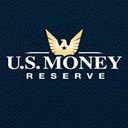The Financial Crisis Was Easy. What Will Powell and the Fed Do Now?
By John Rothans, Chief Numismatist @ U.S. Money Reserve
The Federal Reserve is the most influential money agency in the world. It was created when President Woodrow Wilson signed the Federal Reserve Act in 1913. The Federal Reserve serves as the central bank of the United States — the world’s largest economy. Its early charter was to secure and stabilize the federal banking system, which was besieged by bank runs and panics. One hundred and five years later, its role has expanded dramatically.
Today’s Fed outlines its five key functions on its website: 1) to conduct the nation’s monetary policy, 2) to promote the stability of the financial system, 3) to promote the safety of individual financial institutions, 4) to foster payments and settlements, and 5) to promote consumer protection and community development.
Some say that the Fed has evolved to meet our economy’s changing needs. Others say it has embarked on a systematic power grab that began when the bond between the dollar and gold was severed. Once divorced from the gold standard, money became a “policy” enabling the Fed to manipulate interest rates, enact price controls, make large-scale asset purchases, and engage in “forward guidance” — a new game of vague commentary and directives that are, at best, distracting.
The Fed has the muscle to move markets around the world and dramatically influence global finance. Its sweeping powers impact loans, access to credit, spending, borrowing, and economic growth. Misguided Fed policy has been blamed for bloating the national balance sheet, allowing the nation to amass staggering debt, starting housing bubbles, and creating unsound money principles.
The Fed Chair oversees the Federal Reserve Board of Governors. He or she is, in essence, the CEO of America’s central bank. The Chair is where the “buck stops” in terms of interest rates, inflation, and employment goals. Some say the Fed Chair is more powerful than the U.S. President, particularly during economic crisis.
Image removed by sender. Supporting story image
Past Fed chairs are remembered for their policies and their personalities. Paul Volcker was a fiscal hawk and monetary restrictionist who declared war on inflation. Alan Greenspan was a deregulator who embraced expansionary monetary policy. Ben Bernanke commandeered quantitative easing as his monetary approach was very much shaped by the urgency of the Great Recession. Janet Yellen will be remembered for her caution, calmness, and steady hand post-crisis.
So how will Jerome Powell manage the world’s most powerful bank? Donald Trump’s pick for Fed Chair is the first non-economist to hold the job in almost 40 years. He’s also one of the wealthiest to become Chair. Powell is a former investment banker and past governor of the Fed first appointed by Barack Obama back in 2012. He is considered a consensus builder who helped shape policy under Yellen.
In the lingering wake of the financial crisis of 2008, the new Fed Chair faces a host of stubborn challenges, including unwinding a massive $4.5 trillion balance sheet, normalizing monetary policy, raising interest rates, stimulating wage growth, and monitoring rising inflation. That’s a tall order.
On Powell’s first day on the job, the Dow had its biggest point drop in history. It has been rocked by wild volatility ever since — and each time the new Fed Chair has spoken on Capitol Hill, the markets have tanked. It has been a baptism by fire.
All of this underscores the sheer complexity of Powell’s task. Powell is inheriting an aging recovery, a stockpile of treasuries and government-supported securities, uneasy markets, and hair-trigger sentiment. While he has expressed a Yellen-like patience, he has also floated the possibility of more aggressive rate hikes. He has been at once dovish and hawkish as he attempts to balance growth and stagnation, tailwinds and headwinds, recovery and relapse.
Steering the mother ship through financial disaster may prove to be the easy part. The new Fed Chair now takes the helm steeped in uncertainty about the condition of the ship, the direction of the winds, and the ferocity of the next crisis.
